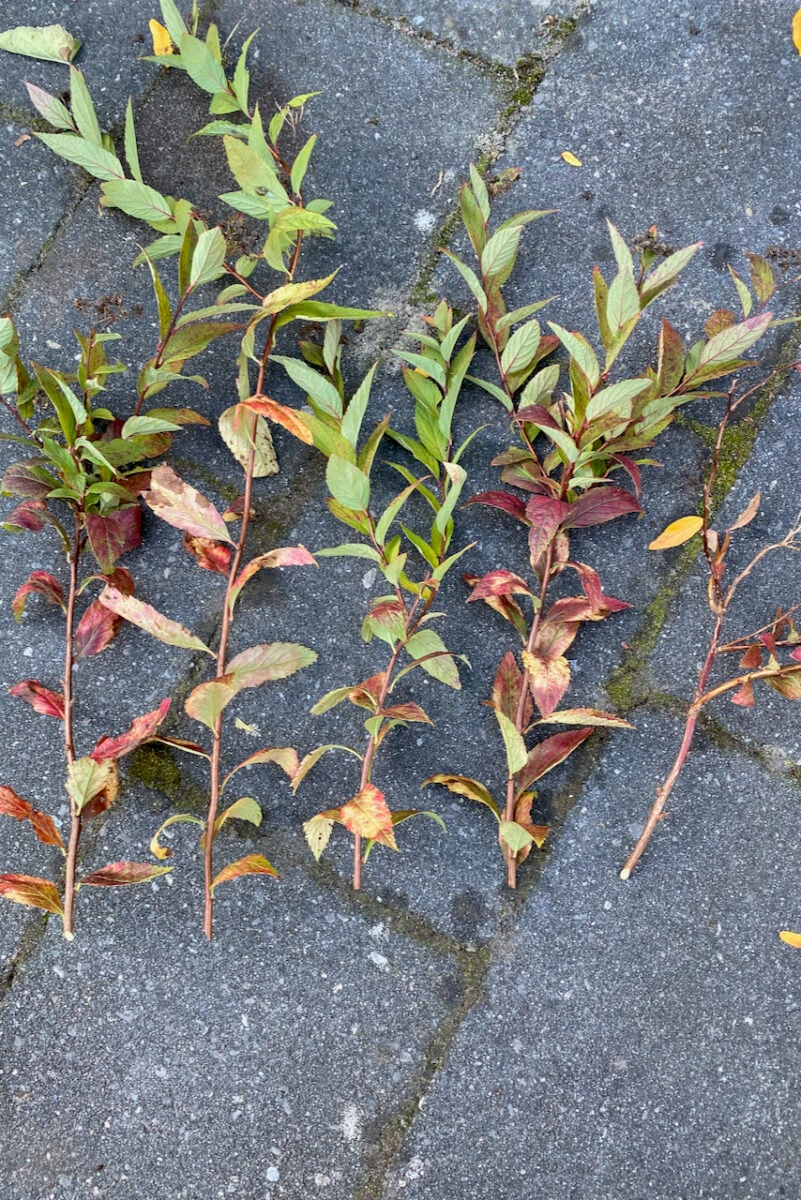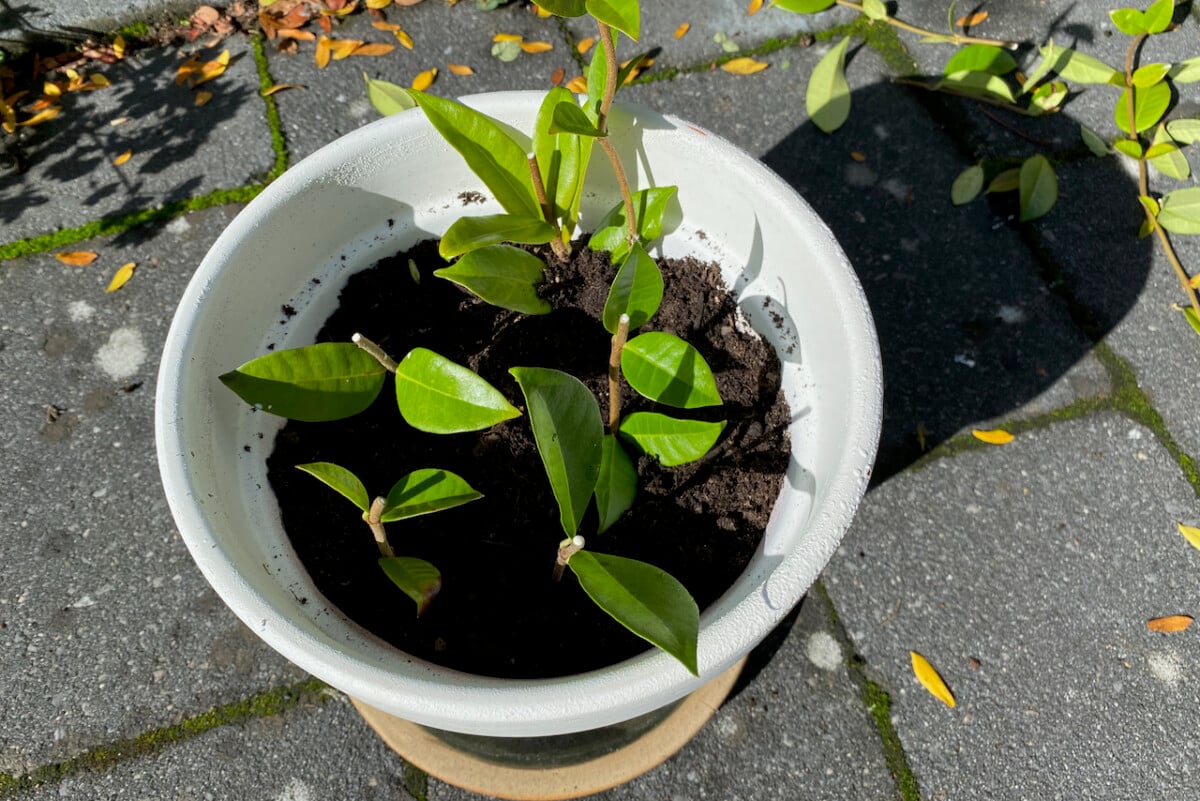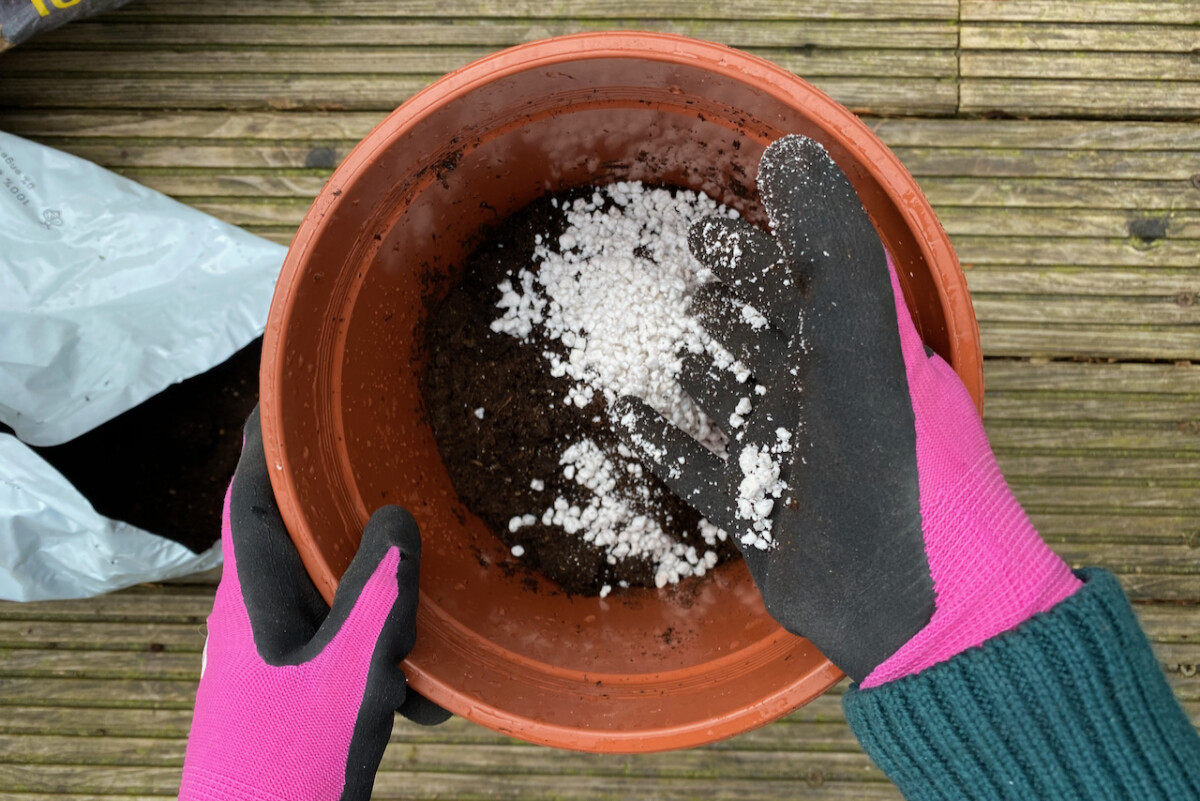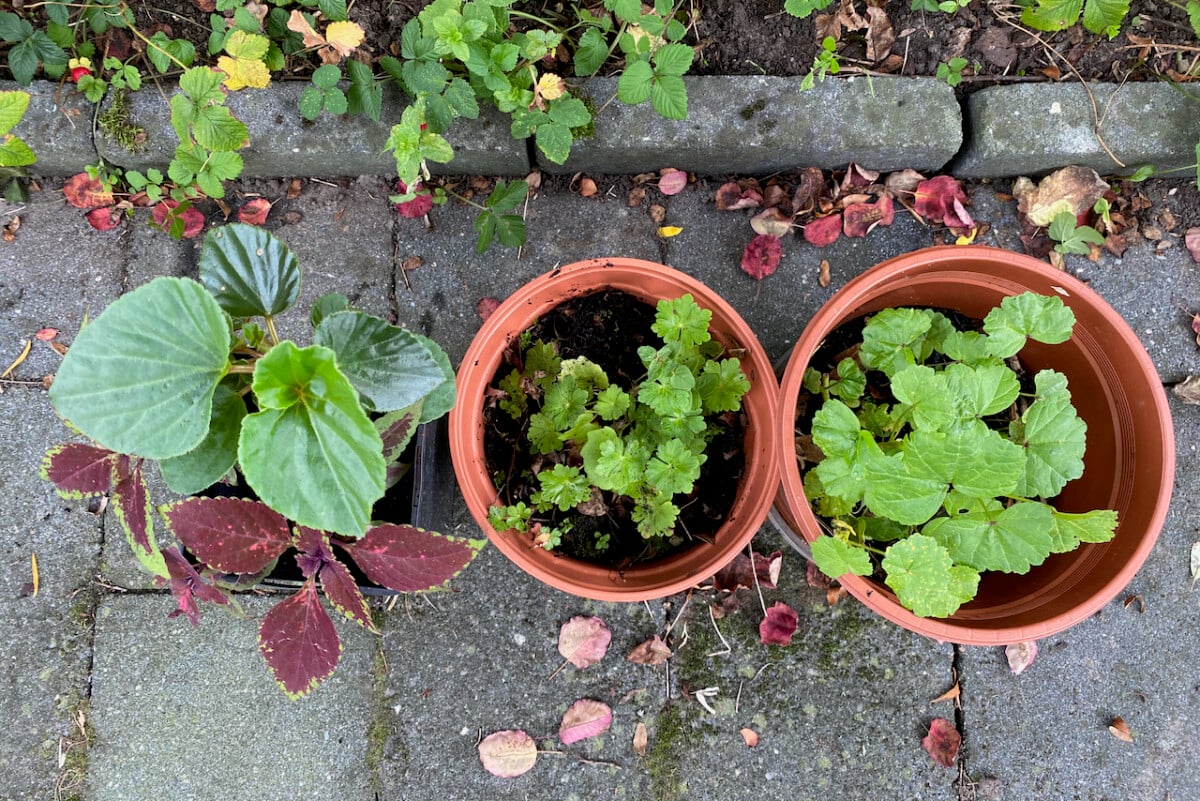Mistakes in horticulture are like aphids . They may ruin your daylight temporarily , but as long as you are n’t bothered too much , the trouble will solve itself . I ’ve come to take on misunderstanding when I ’m gardening . I make them every time of year – never intentionally – and almost always determine a not bad pot .
Since I ’m starting to turn my attention to my fall garden this calendar month , by nature I ’m thinking of disperse works , either by taking cuttings or by division . And since I ’m nothing if not dependable in admitting my mistakes , I ’ll give you a brief intro to all the foul-up I ’ve made ( and some that I ’ve managed to annul in the nick of time ) when I took and cared for plant cutting .
Here are some common mistakes to avoid when you propagate by cuttings :

Pelargonium geraniums are one of my favorite plants to propagate from cuttings. Also my biggest cuttings failures!
Mistake #1: You’re taking the wrong kind of cuttings.
Those of us who keep houseplants – it ’s physically impossible to garden and not have at least a houseplant – know how easy it is to take a cutting . Justcut a bit of pothos stemwith a leaf lymph node impound , wedge it in piss , and joy in the fresh origin that are speedy to grow .
It ’s a chip more complex when it comes to garden plant .
To keep it simple , there are three unlike types of cutting you could take , depending on what stage of growth and what season you ’re taking them in .

Softwood cuttingsare uncommitted for taking in late spring and other summer . With this method , you are using new growth ( current year ’s growth ) to make more plants , so it does do with a sense of instant satisfaction . I wrote an entire guide onhow to take softwood cuttingsand what plants work best for this method .
Semi - hardwood cuttingsare old than deal but untested than hardwood . They are still the current year ’s outgrowth , but senior growth that we normally take in late summer . Semi - hardwood cuttings have a diffuse growth at the tip , but a hardening growth about six column inch below . It ’s this cloth that makes the good cuttings .
Hardwood cuttingsrequire a bit more patience , but in my experience grant the highest rate of success . These are cuttings of sure-enough woodwind that we take in the fall . Again , I ’ll point you to a tutorial I wrote last November aboutthe best plants to take hardwood cuttings fromand how to do it .

Pelargonium geraniums are one of my favorite plants to propagate from cuttings. Also my biggest cuttings failures!
So where is the mistake ?
Some plants , such as star jasmine , will develop well from hardwood and semi - hardwood cuttings . Others will generally grow better from softwood and semi - hardwood cuttings .
My full point is that some industrial plant will happily rise from more than one character of cutting , but you have to know ahead of time if they do so as to avoid disappointment . It ’s unimaginable to admit a comprehensive list of which is which , so before you take cuttings from a plant for the first time , inquiry what type of cuttings it grows best from . Sometimes , there may only be one right answer .

Mistake #2. You’re taking cuttings at the wrong time of year.
From the list above , you may have noticed that convey cut can be a yr - rung thing , starting in outpouring and extending all the way into former dusk . So while I ca n’t say that there ’s a wrong time of year for fill cutting , I will say that there ’s a wrong meter of year : in the middle of summer , specially if you ’re give out through a heatwave .
think back that cuttings do n’t have roots to absorb the wet they require . And even if we cut the surface of the leaves to cut down evaporation , that may not be enough moisture loss prevention during a hot summer . The plant will just shrink up and die without much recourse . So deflect taking any newspaper clipping during the summer months is your good bet .
The good newsworthiness is that a lot of ornamental plants are in bloom during the summer . And since we should n’t take cutting of flower stems to propagate , there ’s very little temptation to do so in the summer anyway .

This is what softwood looks like on a jasmine vine.
Mistake #3: You’re not taking enough cuttings to maximize your chances of success.
This is a fault I ’ve made multiple times before I learned my lesson . It ’s leisurely to be excessively optimistic and count every cutting you take as a new future flora . But it ’s only apossiblefuture plant . And I guarantee you that , unless you have the optimal weather and the world ’s greenest thumb , you will not have a one hundred percentage fortune of winner . Something will go wrongly – whether it ’s one of the mistakes on this inclination or something completely out of your control .
So my advice is to put off your bets , meet it safe and take extra cutting . How many surplus cut calculate on your degree of danger and your experience . I skew pessimistic , so I aim for at least double the cuttings . If I ’m fair , if I get one grown plant out of three cuttings , I ’ll consider it a achiever . And for plants that are notoriously hard to start out from cutting , such as clematis , I ’ll take aim for a twenty pct success rate .
Your rate of success will improve importantly if you have the ripe growing conditions , such as those enjoyed by commercial agriculturist . I ’m speak about a smart , mood - ascertain glasshouse equipped with heated gym mat to place your cuttings on , an intermittent mist system that disperses just the right amount of humidness and fans that keep the air moving .

Semi-hardwood cuttings from a savory (Satureja) plant.
Mistake #4: You’re not planting the cuttings right away.
This is another one that I ’ve been shamefaced of in the past . I would visit friends and family , take healthy beautiful cuttings from their garden , then move to procrastinate on getting them back in the ground .
If you ca n’t plant the cutting as soon as you take them , you MUST store them in a certain credit card bag or a closed jounce , and sooner envelop them in a cockeyed paper towel . Otherwise , they fall behind too much wet and all you ’re left with are droop leafage .
I ’m still bitter about this one particular stumble to my female parent - in - constabulary ’s from which I bring back a fistful of cuttings from her established garden . As it happens , I was so spent by the time we develop back home that I just left them in a pile on the patio mesa for the intact weekend . Not a single cutting take aim , even after I put them in pots and went through the right motions . I had just missed the right timing , and I still commend this mistake almost ten years afterward .

Hardwood cuttings (the lower half of the cutting) from a Japanese spirea (Spirea japonica)
Mistake #5: You’re using soil that retains too much moisture.
The wanton crosscut you’re able to take when you ’re plant slip is to expend soil from your garden . After all , if it ’s good for the plants in your garden , it ’s a good mass medium for the thinning to produce solution in , right ? It ’s not as aboveboard as that .
Garden grease is great because it retains water in the garden , but this much wet will cause the cold shoulder plant to rot before it starts organize baby roots .
Every time I take cuttings , I stick them in fresh potting soil with a handful of extra perlite , horticultural sand or coco coir . These plus facilitate aerate the grunge and retain less moisture than garden soil or regular potting soil .

We generally don’t take cuttings at the height of summer when it’s too hot and the plant is in bloom.
Mistake #6: You’re watering your cuttings too much.
Let ’s say you used the right soil with the perfect wet retention properties . Now the illusion is to refrain from watering it too often . recollect that the new press cutting does n’t yet have ascendent to assimilate all the wet . If the soil looks like you could compress water out of it like it ’s a parasite , then it ’s too tight for cuttings and your new plants will decompose .
Even when the baby plant begin develop base , do n’t overwater them . At this point , they do n’t have fruit to necessitate the weewee or enough leaves to assist perspire the H2O out of the plant . Keep the soil comparatively moist , but not soak pissed .
Mistake #7: You’re not doing any aftercare.
If you reckon your task is done once you ’ve plopped the cuttings into the ground , I ’m pitiful to be the toter of bad news . You ’ve just sow the ejaculate of a new industrial plant , so to talk , but you still need to nurture it . It ’s this stair that can make or fail your success rate .
First , you want to keep the cuttings at the right temperature . This is peculiarly crucial for semi - hardwood or hardwood cutting that you take in the fall . It ’s better to keep your newspaper clipping in a ardent environment of around 65F ( 18 - 20C ) . That ’s not always possible , of course , and you should be secure with a fluctuating temperature , as long as it does n’t dip below 50F ( 10C ) . This often happen starting in October in my field , so I have a backup plan that involves my trusted miniskirt - greenhouse .
Another part of aftercare is nominate sure that the cuttings are getting enough lighter for photosynthesis , but at the same time they ’re not left scorch in the sun . Place your cuttings in part tone and rotate them every couple of weeks to ensure that they ’re grow equally .

Always take extra cuttings to improve your chances of success.
Mistake #8: You’re not keeping the right humidity around the cuttings.
Just like making indisputable you ’re not overwatering or underwatering the plant life , getting the humidness right is also a balance human activity . When you first plant the clipping , it ’s a practiced idea to either keep it in a propagator or to make a sort of cloche to protect the plant stuff from dry out out too apace .
I normally use a plastic purse propped up by chopstick that keep the bag hovering above the works . But you could also use a pliant feeding bottle or jug with its bottom off .
Now here comes the balancing act . Can you spot what ’s ill-timed with the image below ? And more significantly , can you hazard the effect ? This is my belated mistake , one I made not because I did n’t know any good , but because I was merely balancing too many items on my to - do tilt .

I used a bag and a wet paper towel to get this lemon pelargonium geranium home.
There ’s too much condensation around the cuttings because I forgot to remove the fictile cup of tea to countenance some flow of air . The result is easygoing to guess , though hard to accept . All the foliage have explicate black mouldy daub . Luckily , this was one of two with child pots with multiple cuttings in it . I had already moved the other pot indoors , so I ’m happy to say that my sweat was not in vain with this one . Still , lesson hear ! Keep it humid – but not too humid – around your cuttings .
Propagating by cuttings is the well-off method acting to multiply your plant solicitation for free . I think it ’s worth risking mistake because , more likely than not , you ’ll end up with raw plants anyway . horticulture is a absolvitory pastime like that .

You can improve drainage by adding perlite to your potting soil.

Overwatering the baby cuttings is a very common mistake.

These cuttings are growing well in half-shade under a tree in my garden.

Little plastic domes work well to keep the humidity in and the temperature warmer.

There was too much condensation and not enough airflow in this bag.